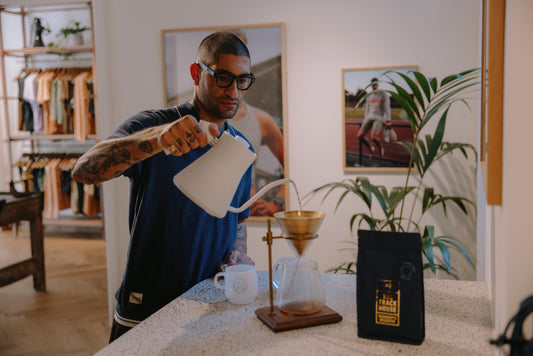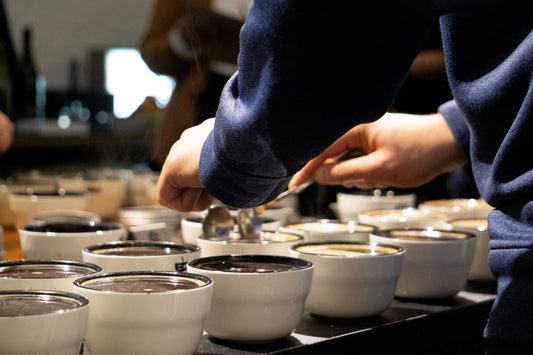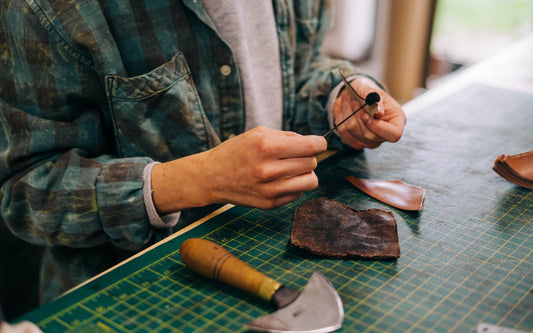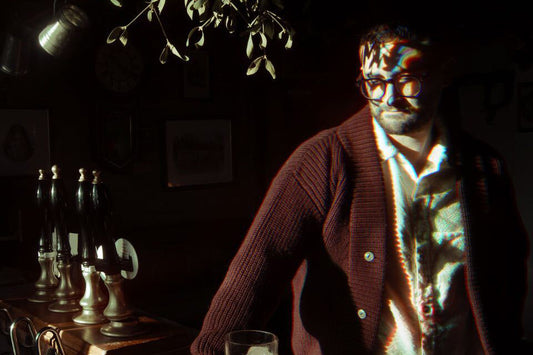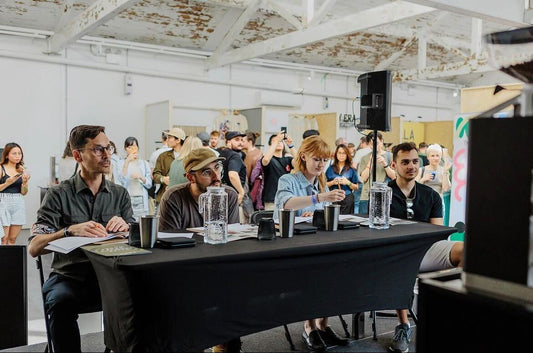It was supposed to be quite simple. A leisurely cab ride to City airport, the short hop to Amsterdam, and then change planes and into Economy Comfort for an 8-hour shuttle to Kigali, Rwanda. Catch up on some emails, a glass of wine and maybe a little sleep. It wasn’t to be. Delays in London meant I missed my Kigali connection, and after an 11-hour wait in the Netherlands I got bumped to a Kenya Airways flight, which unfortunately was going to Nairobi, Kenya. Then Bujumbura, Burundi. And then eventually Kigali. To make up for lost time, it was straight into the Land Cruiser for a 10-hr drive south-west to Cyangugu. 40-hours door-to-door.

While it wasn’t the start I’d have scripted, at least I was in Rwanda. We’ve been buying coffee from this beautiful country since the day we started, but this was my first visit and I was looking forward to getting a better understanding about some of the challenges and opportunities that are inherent to Rwandan coffee production. I was traveling with my friend Cory, a coffee trader with Falcon Speciality who lived some years in Kigali, and Sam - one of the roasters from Caravan. We were collected from the airport by Zachary who works with RWASHOSCCO (Rwanda Smallholder Specialty Coffee Co.) and after a quick visit to the office we collected his colleague, Sam, and were on the road to visit some washing stations.

Our first port-of-call was the Cyarumba washing station in Maraba, about 150km from Kigali, which produces the well-known local brand of coffee, Cafe de Maraba. Similarities to the Kenya washing stations I’d visited earlier in the year were striking, and closer inspection showed that the disc-pulper being used was actually manufactured in Nairobi. Despite being well known, the quality of coffee produced at Cyarumba is not really what we’re looking to purchase, so after a brief tour it was back into the Land Cruiser to continue our journey.

The day’s intended destination was an exciting one for me personally, as we were headed to the Nyarusiza washing station - one of the two stations that contribute to a coffee we’ve bought every season since we started roasting; Buf Cafe. The story of Buf Cafe, and in particular that of it’s owner - Epiphanie Mukashyaka - is a sad, yet ultimately hopeful and uplifting one. It’s also a story that has been told a number of times by more eloquent people than myself, and so instead of re-telling it, I urge you to read their versions instead. Suffice to say, however, that with Epiphanie’s son, Sam being good enough to drive us here from Kigali, and give us the tour of the washing station and take us for a road-side lunch of brochettes and Primus (goat meat kebabs and beer... speaking my language) the frustration of such a long journey to get to Rwanda was dropping out of consciousness rapidly.

It’s an interesting feeling, traveling such a long way to visit the origins of something that has been so much a part of our business over the last few years, and an important element of our arrival calendar for our Baristas and our customers alike. Shelving this, I was conscious not to over-indulge in sentimentality as there were a thousand questions that needed answering; How was the harvest this year? Had the rains had a big impact on yield or quality? What challenges were the farmers finding this season? How did the factory manager feel about the quality of cherries arriving? What price was the factory offering for cherries? How did that compare to the neighbouring mills?

It was at Nyarusiza that I was first introduced to the concept that there was competition between Rwandan wet mills (or factories) to buy coffee cherries. Traditionally, I’d not really considered competitive purchasing outside of what we experienced in Europe or more broadly, as roasters or importers competing to secure particular coffees or microlots. In Rwanda, and more dramatically this year due to low yields, washing stations were competing to purchase coffee cherries from farmers, lest the cherries be delivered to another washing station and take away from the overall production volumes, and ultimately, profits.
Great coffee can only come from fresh, ripe, intact coffee cherries, harvested from healthy trees and delivered promptly to a wet mill, and we’re only interested in buying the greatest of coffees. Coffee farmers, on the other hand, are unlikely to have ever tasted the coffee that’s produced from the cherries they grow, so while they’re strongly encouraged by the best wet mill managers to only pick and deliver the highest grades of cherries, in Rwanda we saw that due to a shortage in supply, everything delivered to the wet mill was purchased at the same rate: anywhere from 140 - 170 Rwandan francs per kilogram. Factory managers appeared to be in no position to turn cherry away, or even to offer one pricing level for ripe, clean cherry, and another for the lower grade. While most of the cherries that we saw arriving all around Rwanda were of a good standard, there could easily have been another stage of dry pre-sorting (before pulping) to separate out quality levels even further. No-one I spoke to considered this feasible or likely, due to the shortage of cherries.
The upside of having just one price, and allowing some less ripe and some more ripe cherries into the system is that the wet mill gets greater volumes of coffee cherries to process, dry and sell. The downside is that the processing and subsequent sorting of the coffee into various grades and qualities is more arduous and labour-intensive, and it has to be a consequence that some of the cherries of questionable ripeness make their way into the lots that we buy.

It’s usually said that years of low coffee cherry yield on trees equates to higher quality in the cup; trees can focus more energy into fewer cherries, and farmers, producers and sorters can put more energy into turning those cherries into dried, green coffee. What about this other factor of a requirement of a certain volume of production to meet overheads necessitating a ‘moving of the quality goalposts’?
One of the main reasons I was in Rwanda was to get to understand these challenges more completely, to encourage continued efforts to be more, more and more selective, and to identify ways that we might be able to separate out the highest quality coffee from a number of pickings, from nearly 7,000 farmers, that would likely be blended down into more larger and homogenous lots. And if this alone wasn’t a challenge enough, the most important element here was that it made not only a positive financial impact on the livelihoods of the contributing farmers, producers and exporters, but that it was also sustainable and had the potential to be on-going.
I won’t pretend that I came away with any clear cut answers on how this could be achieved, and even the many, many ideas that I have are a bit messy, and in some instances overlap with other problems. What struck me as crucial though, is that so much of what I would like to see happen is directly in line with what people like Sam and Zachary -- as representatives of the farmers and producers -- would also like to see happen; a continuing development of quality which in turn fetches a higher price, and an ongoing effort to bridge the perceptual gap between where the coffee is grown and where it is consumed.

Sam checking over parchment coffee on the skin drying tables.
For me, as we climbed back into the car for even more travel, this time to the Cyangugu where we’d be staying the night, and could finally sleep horizontally, I started to realise just how important trust, a relationship and dialogue is going to be for anyone who wants to source great coffee in a fair and sustainable way. It’s one thing to fly in, shake hands with some producers and then hit the cupping tables, bidding on the best lots before flying out again with a container of coffee purchased. It’s another to try to understand the challenges at a grass roots level, before looking for avenues to exploit opportunities. It’s one thing to visit a washing station and start barking instructions about cherry selection, drying times, and fermentation times. It’s another thing to take a step back, and to try to understand how all of the pieces fit together, and just how insignificant the desires of coffee drinker could be considered in the bigger picture.

It’d been a long two days of travel, and now simultaneously tired, inspired, confused and full of hope, I did my best to sleep on the bumpy, rain-affected roads, ultimately extremely happy to be back in the beautiful surrounds of rural Africa.
Share:


